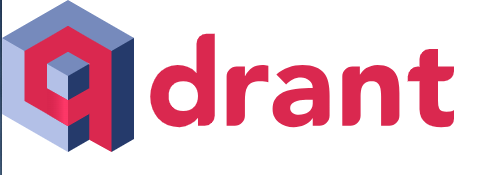In the dynamic landscape of artificial intelligence (AI) and natural language processing (NLP), the demand for efficient and high-performance vector databases has never been more crucial. These databases serve as the backbone for various applications, including language models (LLMs) that rely on semantic understanding. In this blog post, we delve into three leading vector databases – Weaviate, Milvus, and Qdrant – and explore how they play a pivotal role as semantic caches for LLM-based applications.
Weaviate

Weaviate stands out as a powerful and flexible vector database designed to facilitate the storage and retrieval of high-dimensional vectors. Developed by the creators of Semantic Vectors, Weaviate brings a semantic layer to vector databases, making it particularly suitable for LLM applications. One of its defining features is its ability to understand and manage contextual relationships between vectors, enabling more nuanced semantic searches.
Weaviate’s schema flexibility allows developers to define complex data structures tailored to their specific use cases. This is a significant advantage when dealing with the intricate relationships inherent in LLM-based applications. Additionally, Weaviate supports GraphQL queries, offering a standardized and efficient way to interact with the database, making it well-suited for integration with a variety of applications.
The semantic caching capabilities of Weaviate shine when used with LLMs. By storing and retrieving vectors in a way that captures their semantic context, Weaviate enhances the performance of LLMs by providing quick and accurate access to relevant information. This is particularly valuable in applications such as natural language understanding, sentiment analysis, and content recommendation, where the semantic nuances of data play a critical role.
Milvus

Milvus is another heavyweight in the realm of vector databases, focusing on delivering high-speed vector similarity search. Developed by Zilliz, Milvus is an open-source platform designed to handle massive-scale vector data with efficiency and speed. It excels in scenarios where real-time search and retrieval of similar vectors are paramount, making it an ideal candidate for LLM-based applications that demand rapid semantic analysis.
Milvus supports a variety of vector types, including floating-point and binary vectors, catering to the diverse needs of AI applications. Its versatile architecture allows users to deploy Milvus across different environments, from on-premises servers to cloud-based infrastructure. This flexibility makes Milvus an excellent choice for developers seeking a scalable solution for semantic caching in LLM applications.
The indexing mechanisms employed by Milvus contribute significantly to its performance in semantic caching. By utilizing advanced indexing algorithms like IVFADC, Milvus accelerates vector search operations, enhancing the speed at which LLMs can retrieve semantically relevant information. This capability proves invaluable in applications such as language translation, document summarization, and contextual understanding, where quick access to contextually similar vectors is crucial.
Qdrant

Qdrant is a relatively newer entrant into the vector database arena but has quickly gained traction for its focus on building an open-source, distributed vector database. Developed by the team at Neural Networks and Deep Learning Lab, Qdrant offers a distributed architecture that ensures seamless scalability, making it well-suited for large-scale LLM-based applications that demand efficient semantic caching across distributed systems.
Qdrant’s emphasis on an easy-to-use API and compatibility with popular programming languages simplifies the integration process for developers. Its distributed nature enables the database to handle vast amounts of vector data, making it an ideal choice for LLMs that operate on extensive datasets, such as those used in training large language models.
The underlying indexing mechanisms in Qdrant contribute to its effectiveness as a semantic cache for LLM-based applications. By incorporating advanced indexing techniques like HNSW (Hierarchical Navigable Small World), Qdrant optimizes vector search operations, providing a scalable and efficient solution for applications requiring real-time semantic analysis. This is particularly advantageous in use cases like conversational AI, chatbots, and question-answering systems, where the rapid retrieval of contextually similar vectors is paramount.
Comparative Analysis
While each of these vector databases offers unique features and strengths, a comparative analysis is essential to determine the most suitable choice for a given LLM-based application. Weaviate’s emphasis on semantic relationships and GraphQL support makes it an excellent choice for applications that require nuanced semantic searches and complex data structures.
Milvus, on the other hand, shines in scenarios where speed and real-time similarity search are critical. Its support for multiple vector types and advanced indexing algorithms positions it as a top contender for applications demanding rapid access to semantically similar vectors.
Qdrant, with its distributed architecture and focus on scalability, is well-suited for large-scale LLM applications operating across distributed systems. Its ease of use and compatibility with popular programming languages make it an attractive option for developers looking for a scalable and accessible solution.
Conclusion
In the ever-evolving landscape of AI and NLP, vector databases play a pivotal role in enhancing the performance of LLM-based applications. Weaviate, Milvus, and Qdrant stand out as leading choices, each offering distinct advantages tailored to specific use cases.
The decision between these vector databases ultimately depends on the unique requirements of the LLM-based application in question. Developers must weigh factors such as semantic complexity, real-time search speed, scalability, and ease of integration to determine the optimal vector database for their specific use case.
As the field continues to advance, the role of vector databases in semantic caching for LLM-based applications will only become more critical. The ongoing development and innovation in Weaviate, Milvus, Qdrant, and other vector databases will undoubtedly shape the future of AI applications, pushing the boundaries of what is possible in semantic understanding and contextual analysis.
